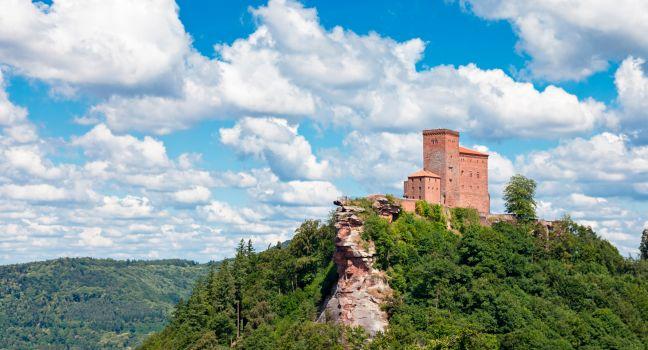Burg Trifels

Burg Trifels is on the highest of three sandstone bluffs overlooking Annweiler, 15 km (9 miles) northwest of Gleiszellen. Celts, Romans, and Salians all had settlements on this site, but it was under the Hohenstaufen emperors (12th and 13th centuries) that Trifels was built on a grand scale. It housed the crown jewels from 1125 to 1274 (replicas are on display today). It was also an imperial prison, perhaps where Richard the Lion-Hearted was held captive in 1193–94. Although it was never conquered, the fortress was severely damaged by lightning in 1602. Reconstruction began in 1938, shaped by visions of grandeur to create a national shrine to the imperial past. The monumental proportions of some parts of today's castle bear no resemblance to those of the original Romanesque structure. The imperial hall is a grand setting for summer concerts. On foot: From Annweiler, follow the local signs for Burg Trifels. The hike is about an hour. By car: Follow the A-65 in the direction of Karl-Ludwigshafen, take exit Landau-Süd, then B-10 to Annweiler west. From there follow the local signs. Parking is at the foot of the fortress, a 20-minute walk from the top.




